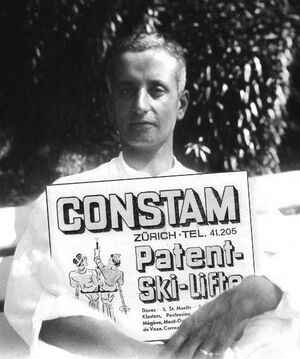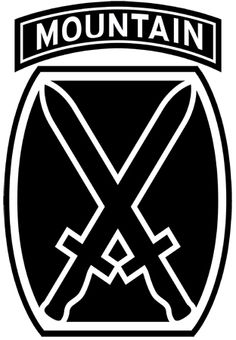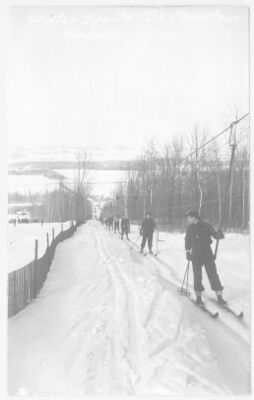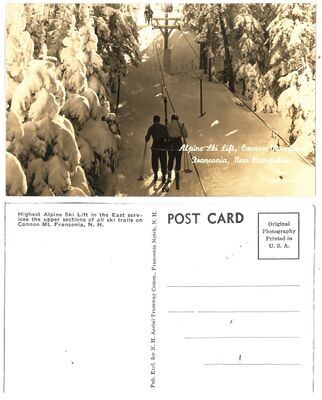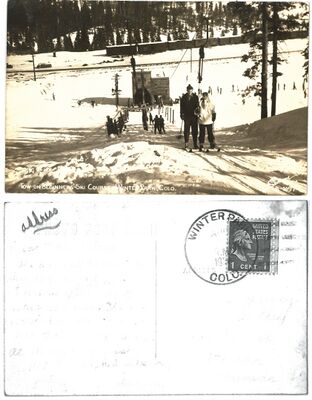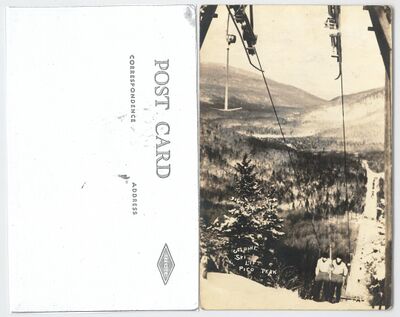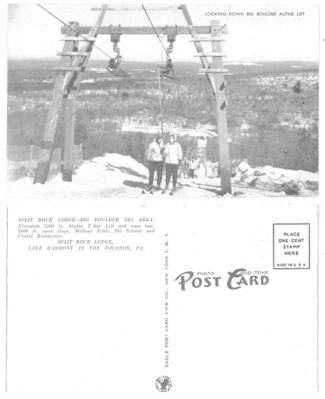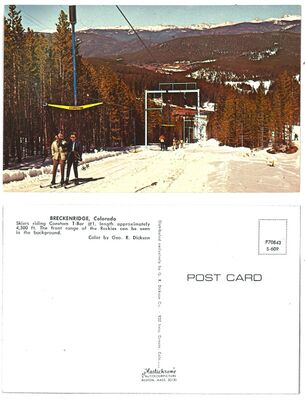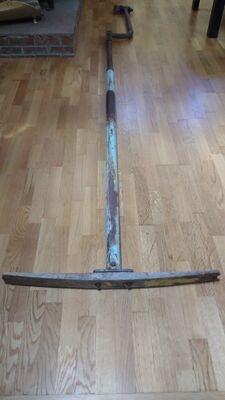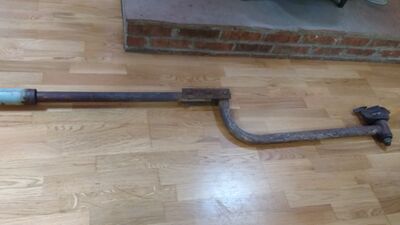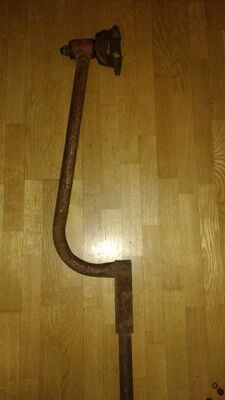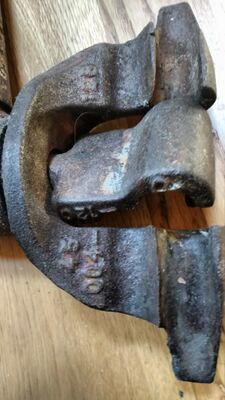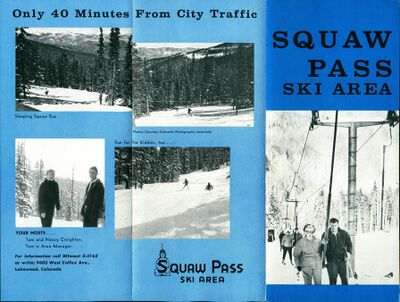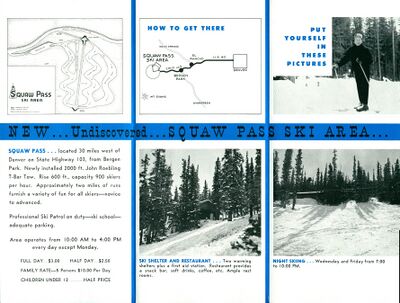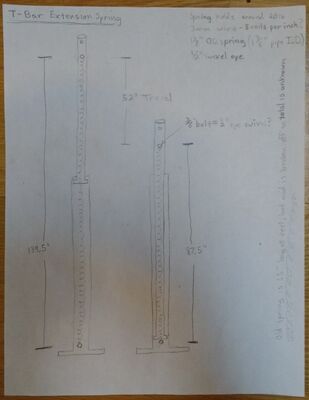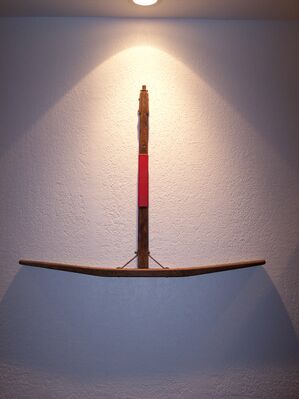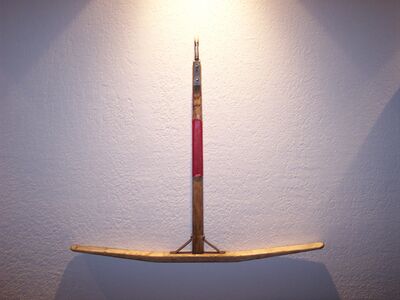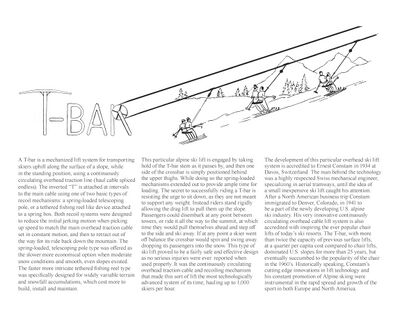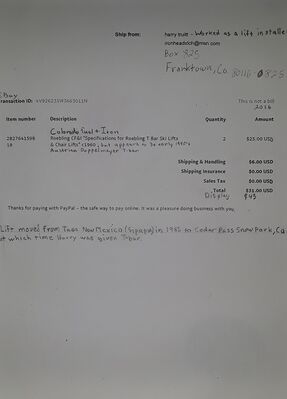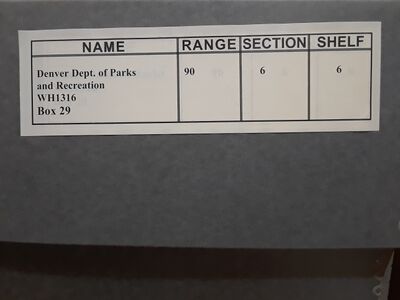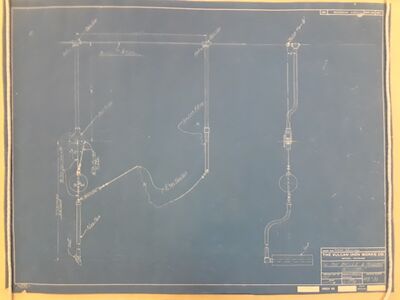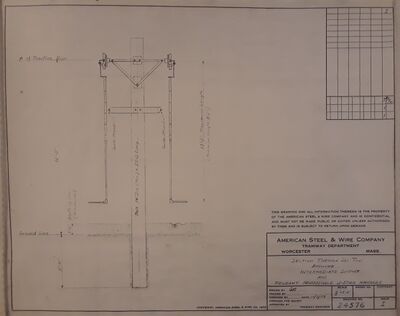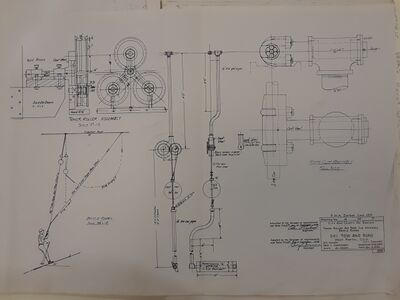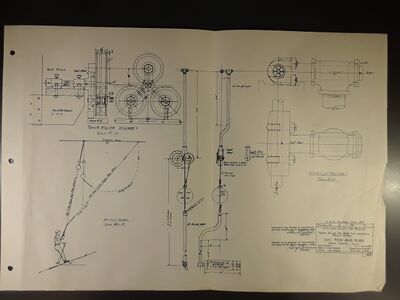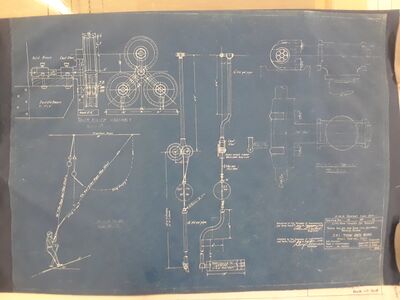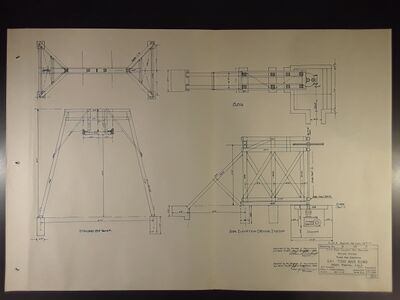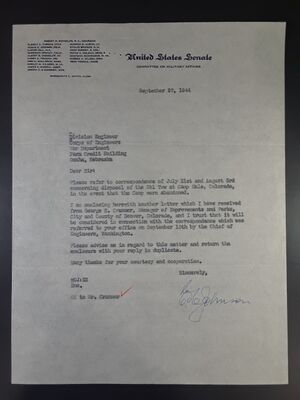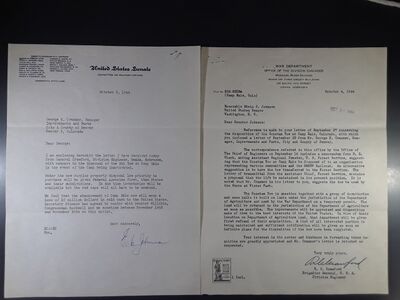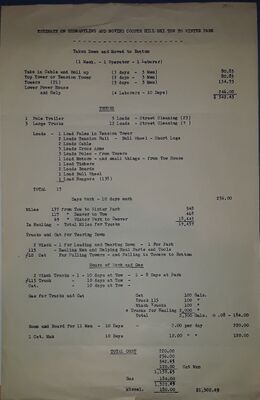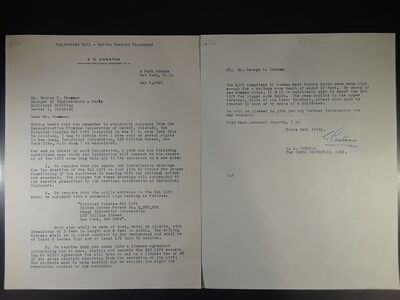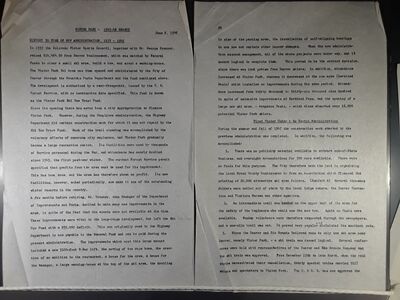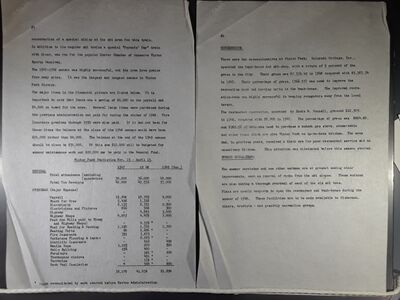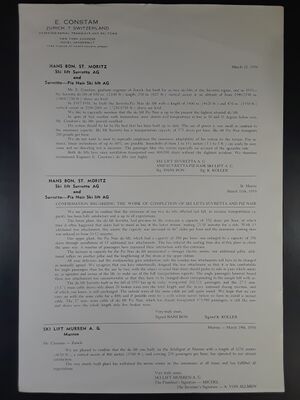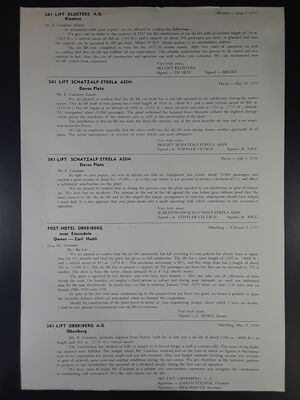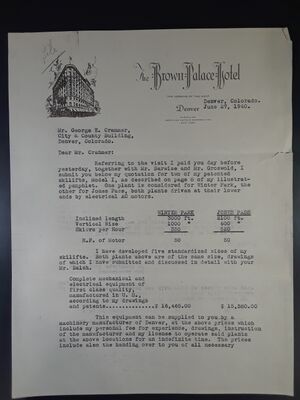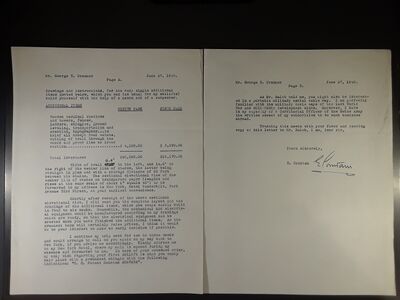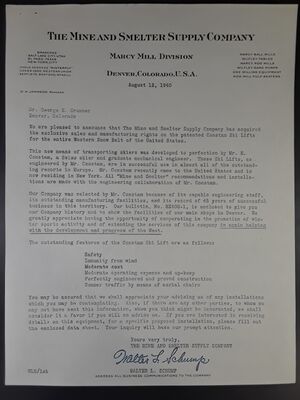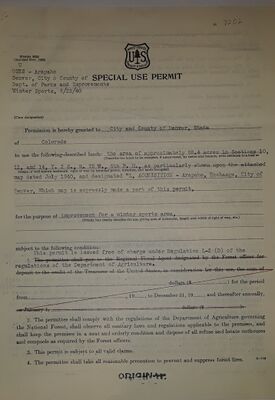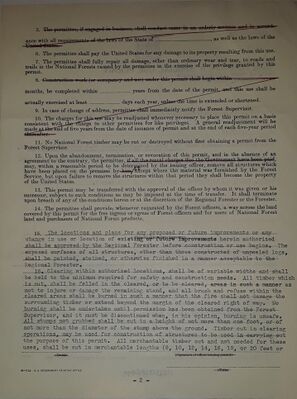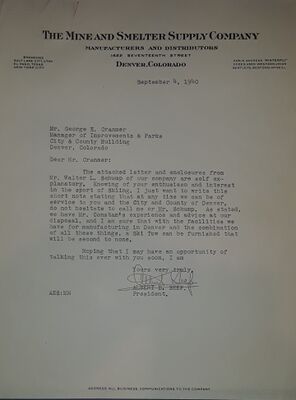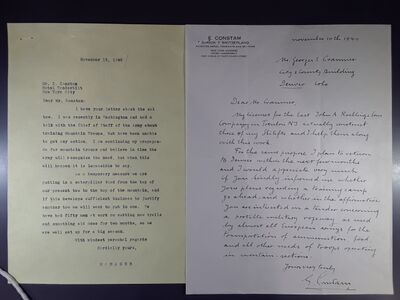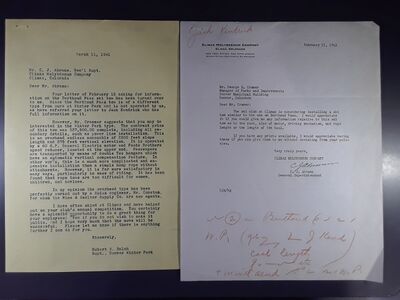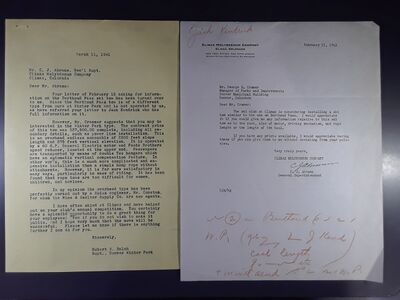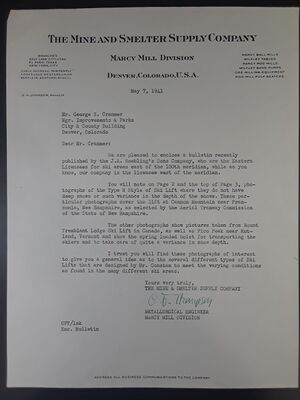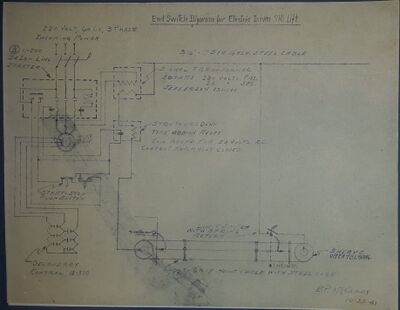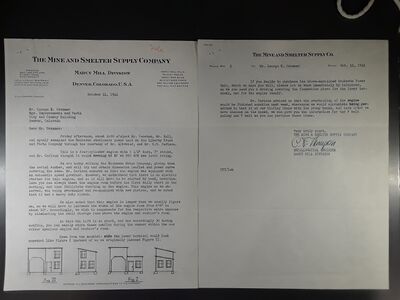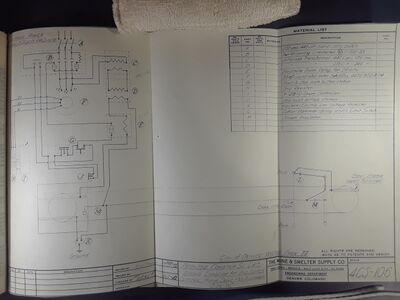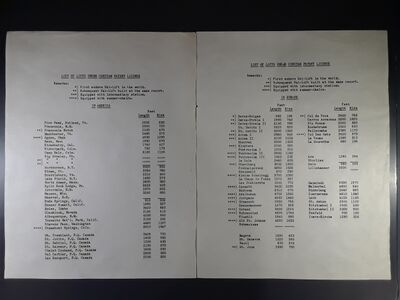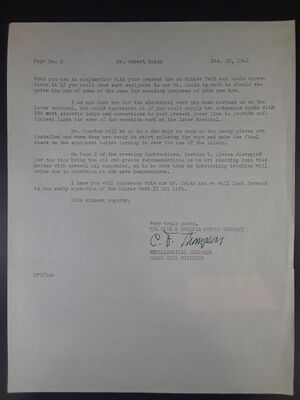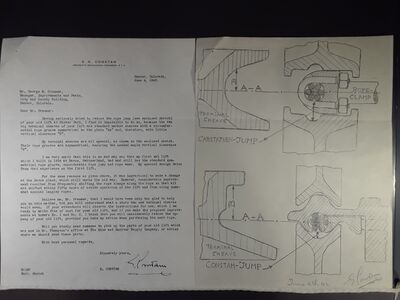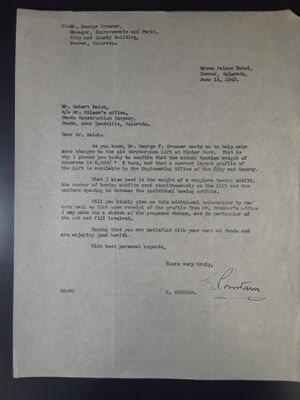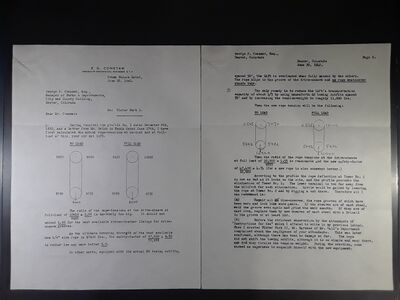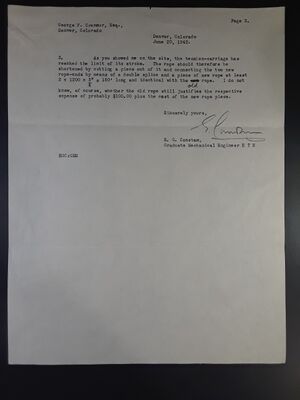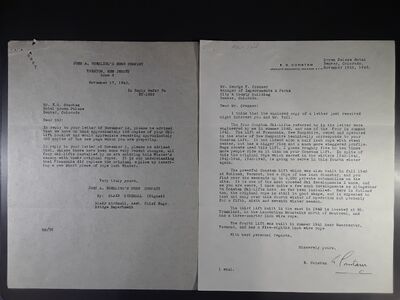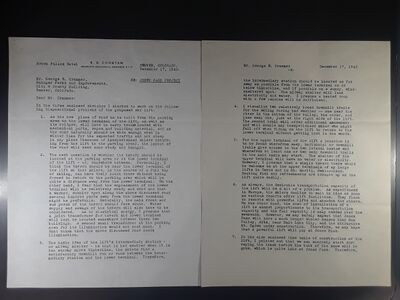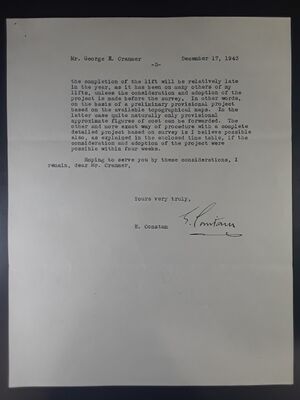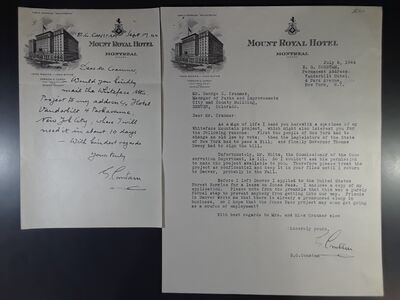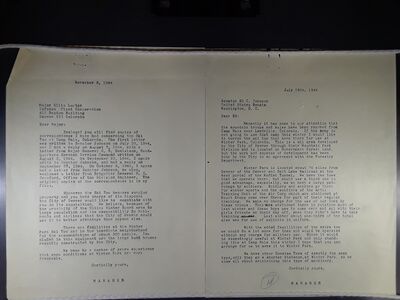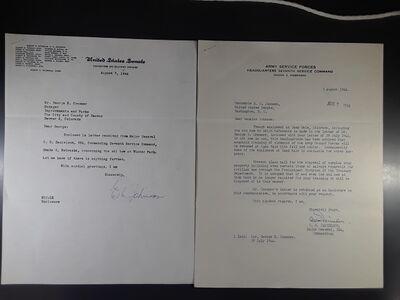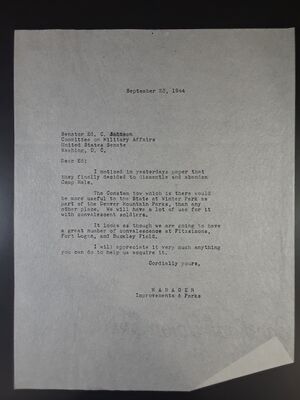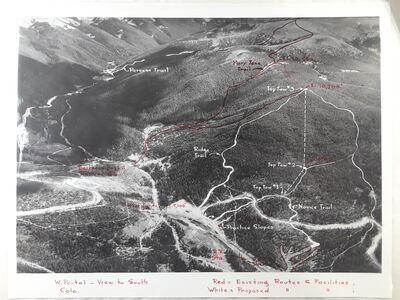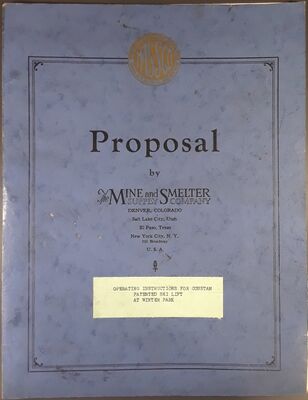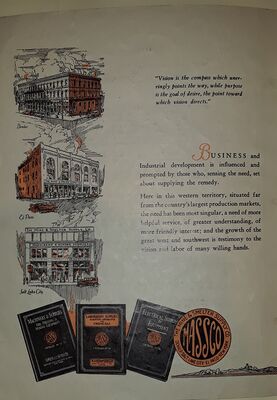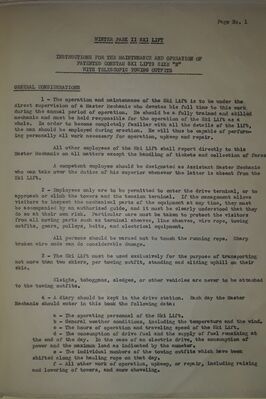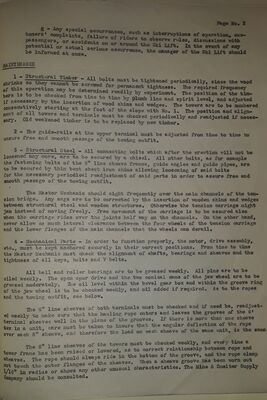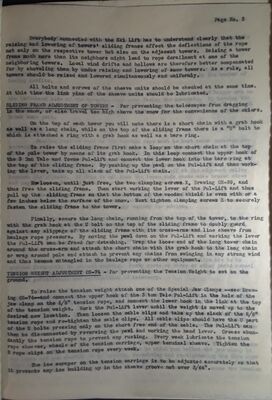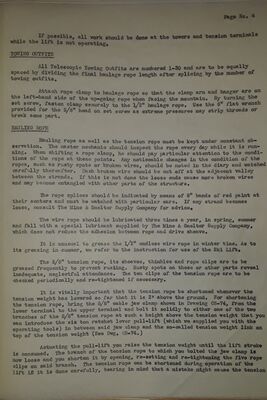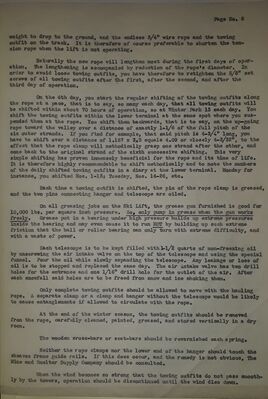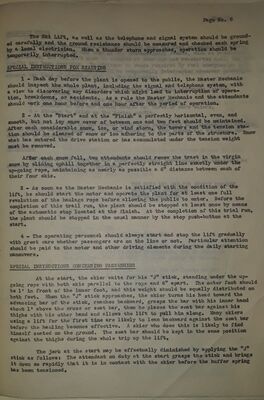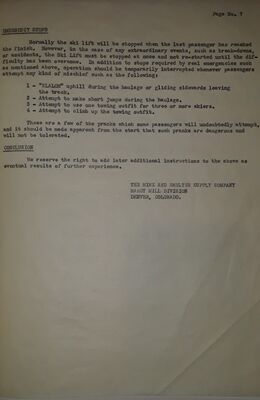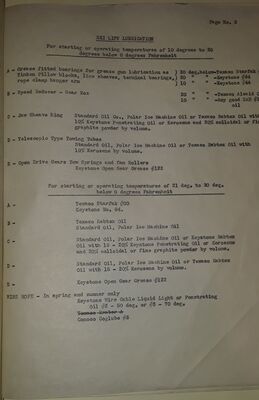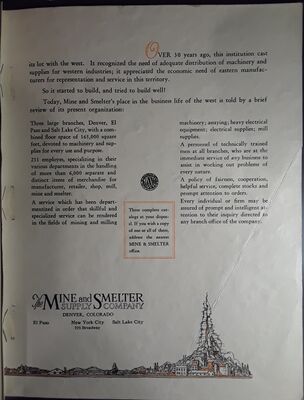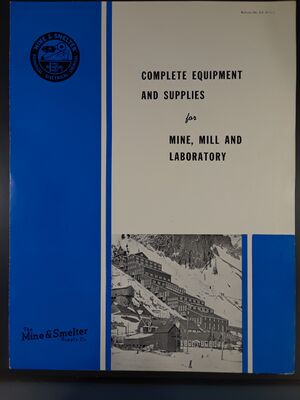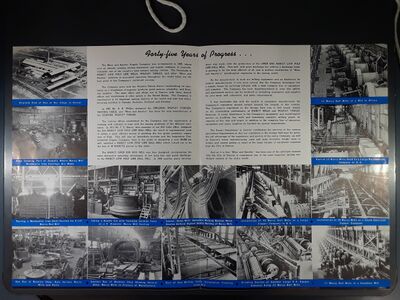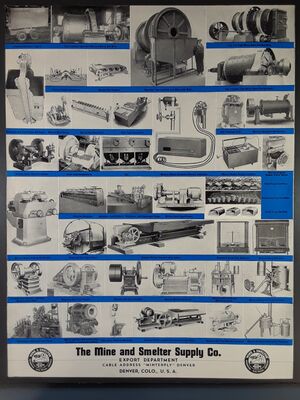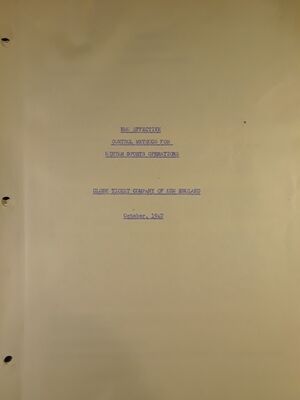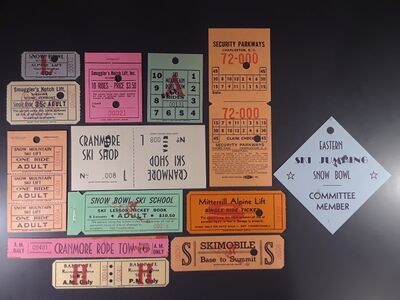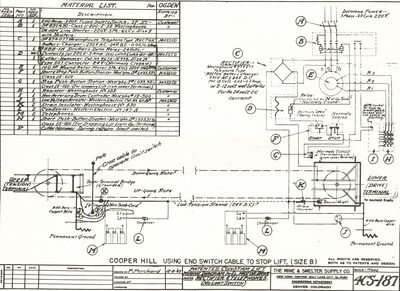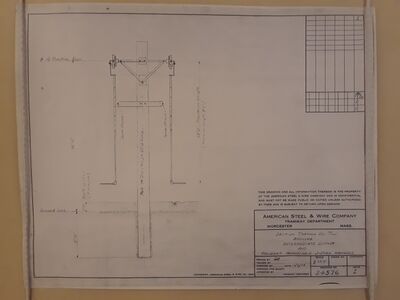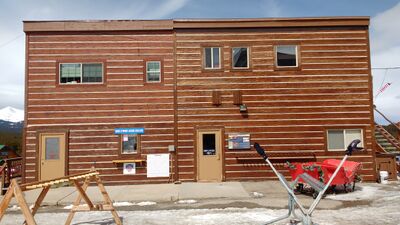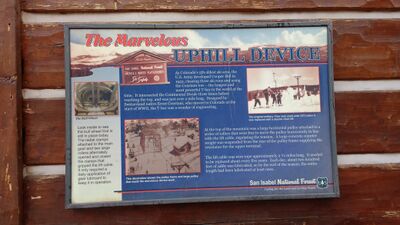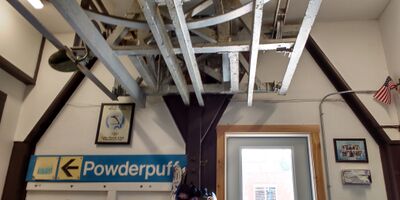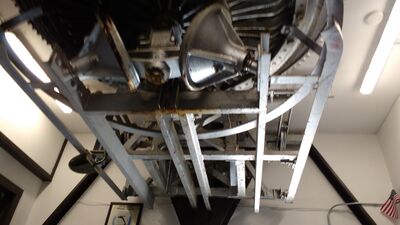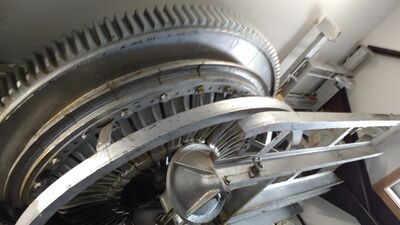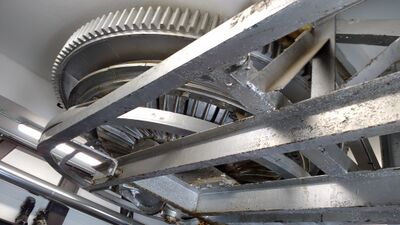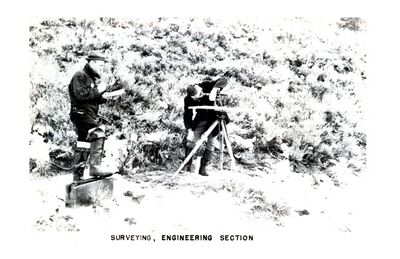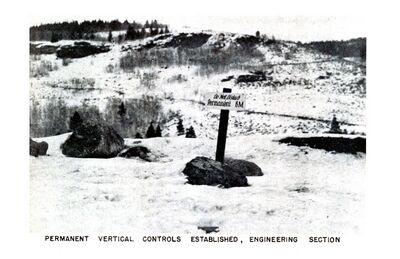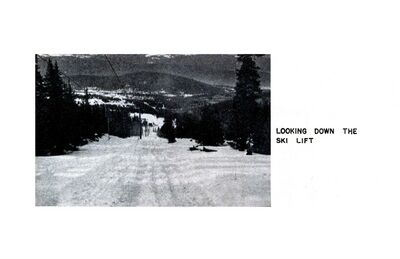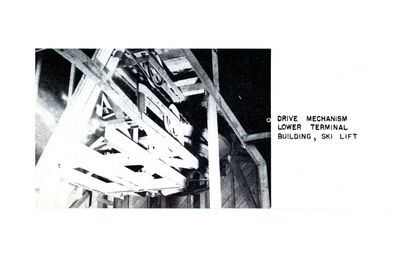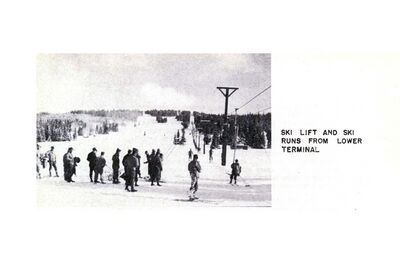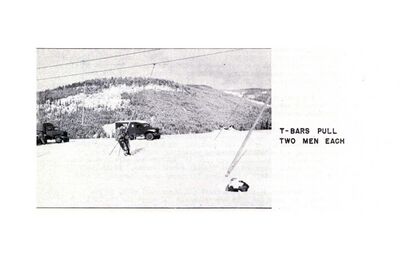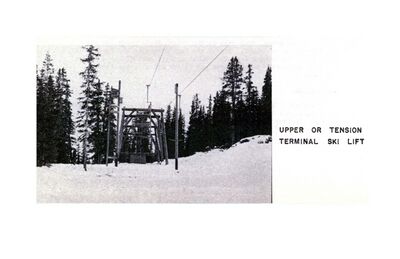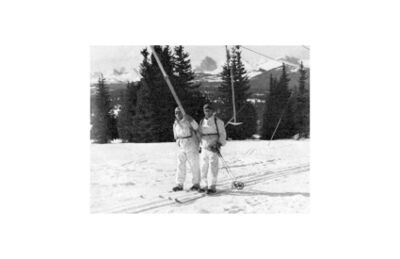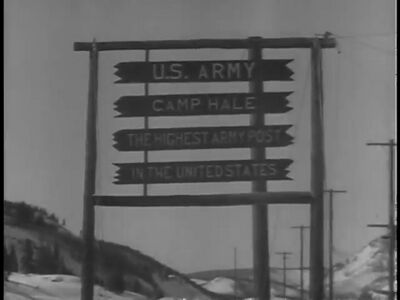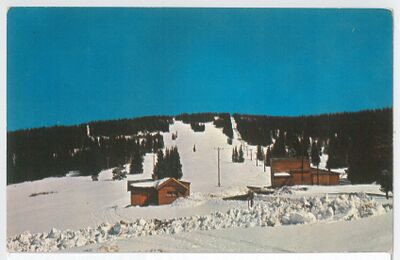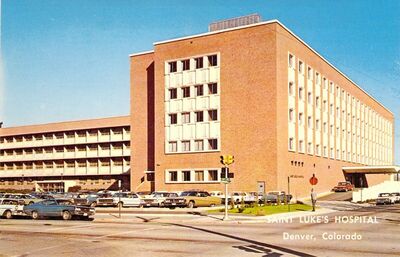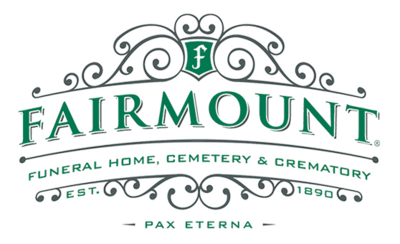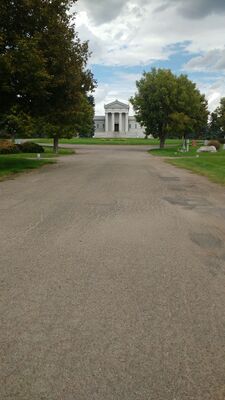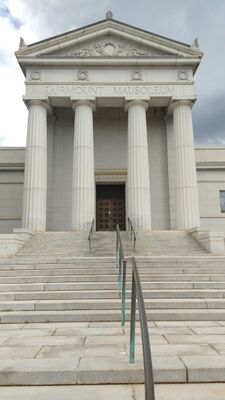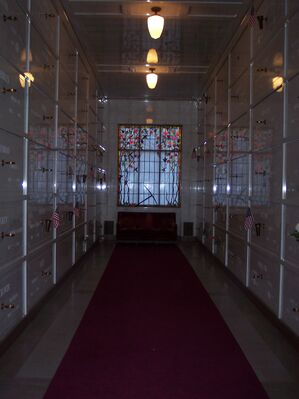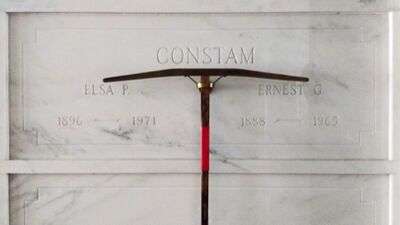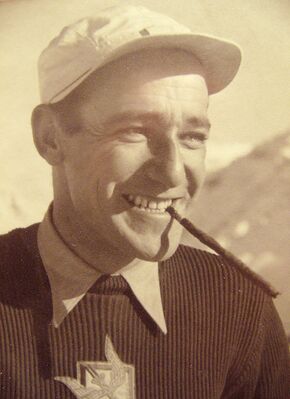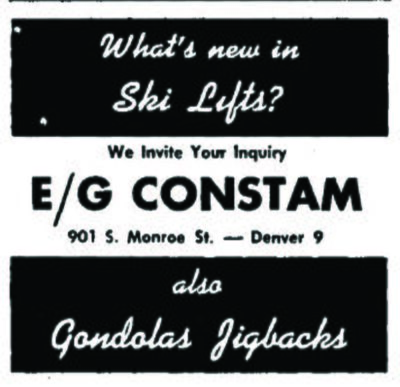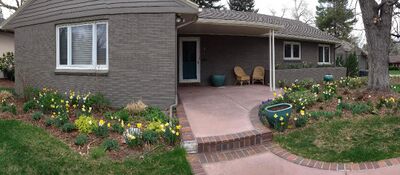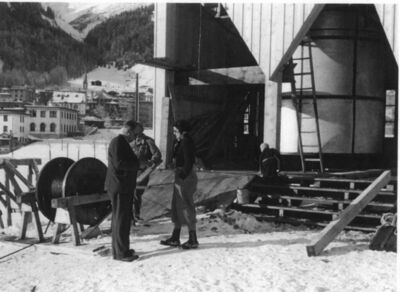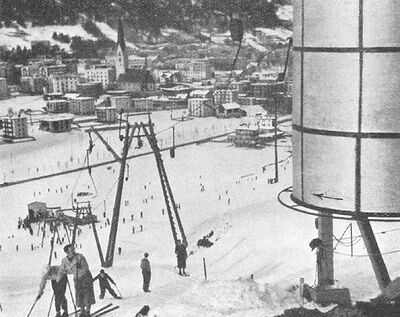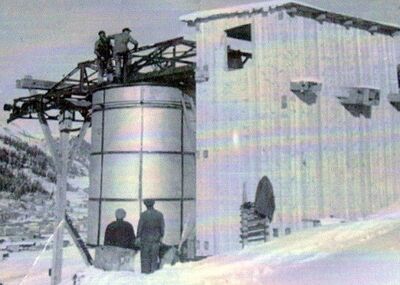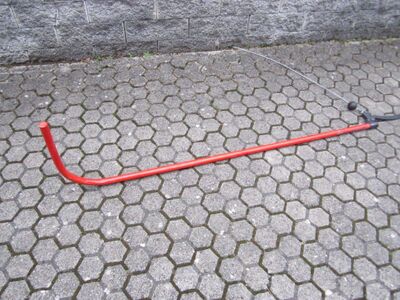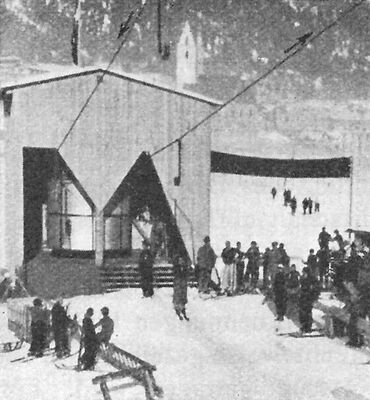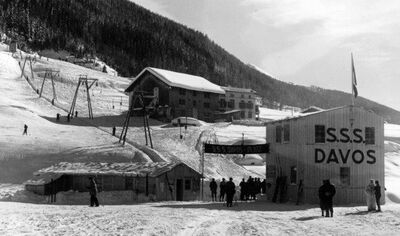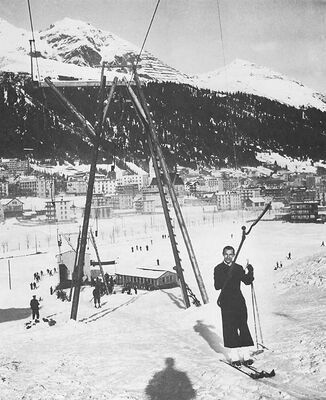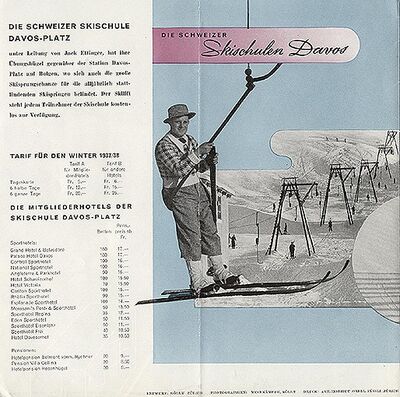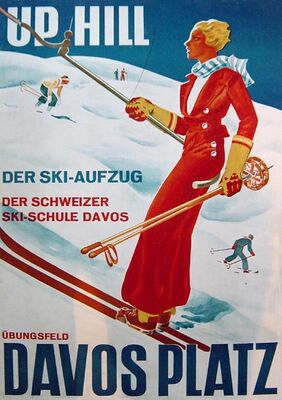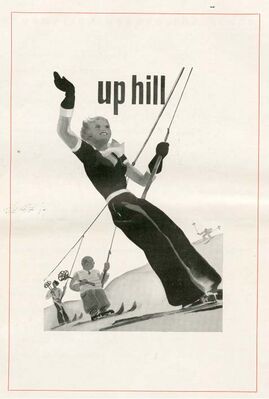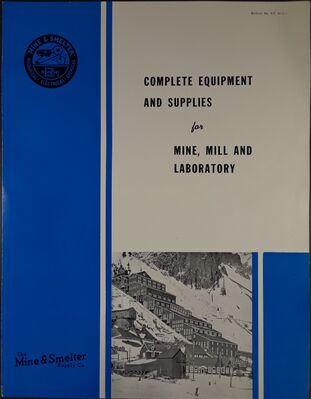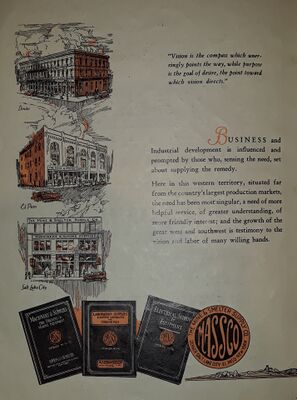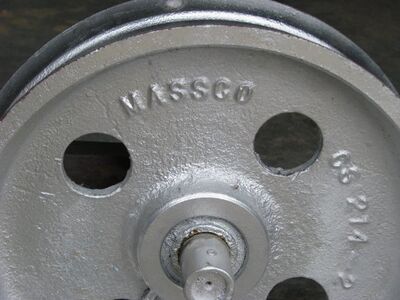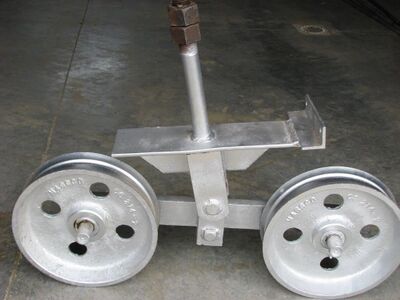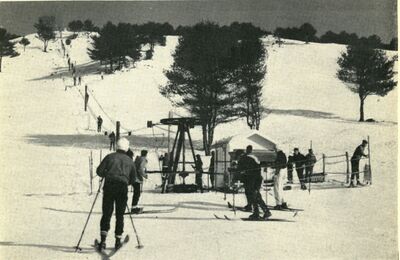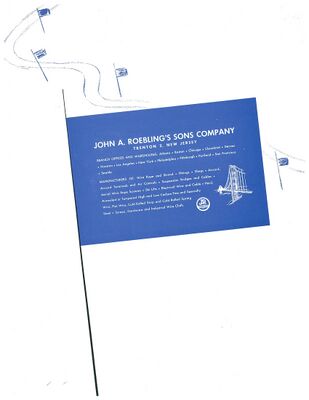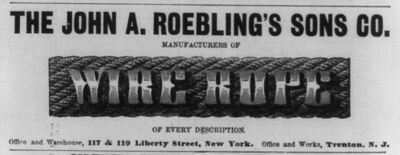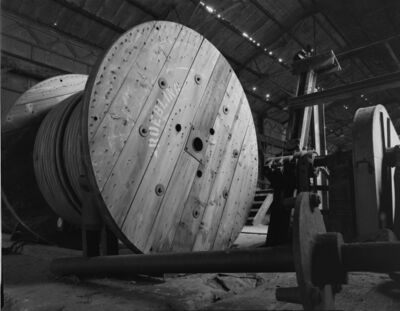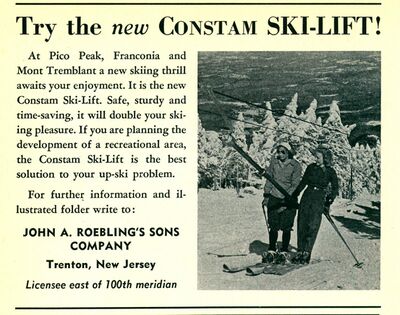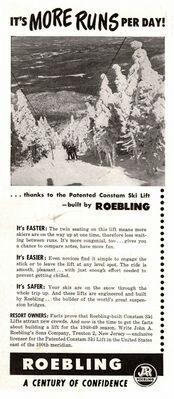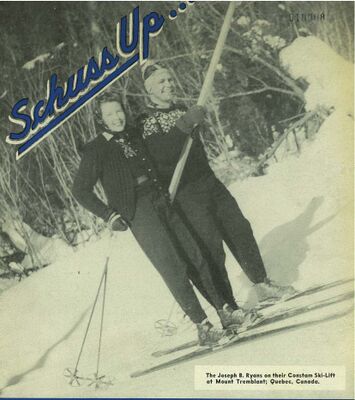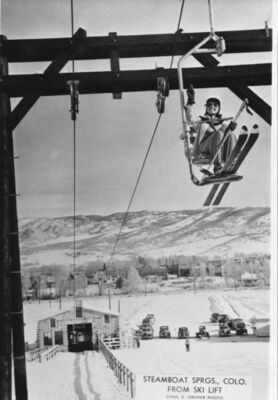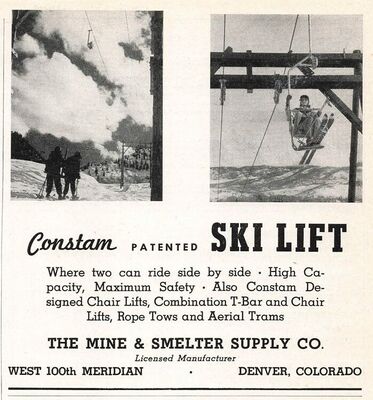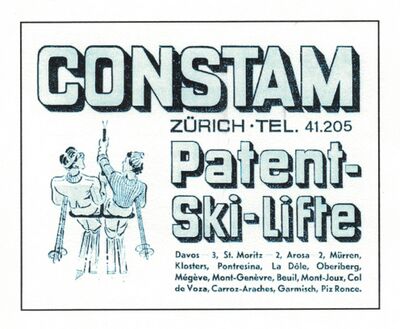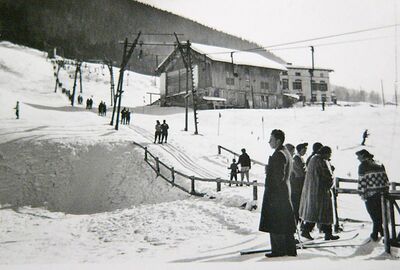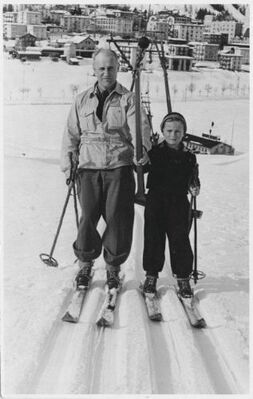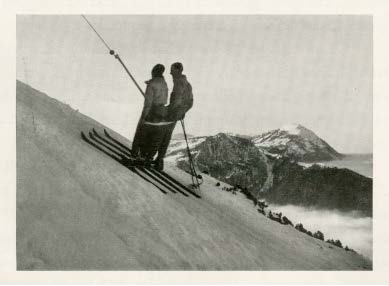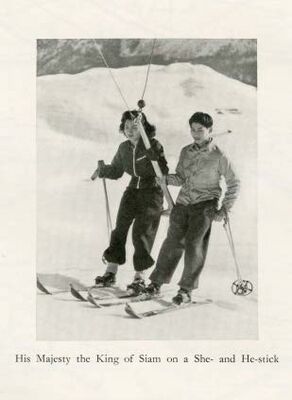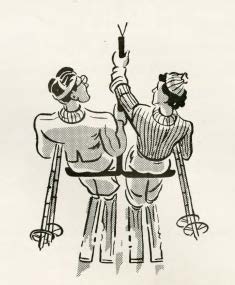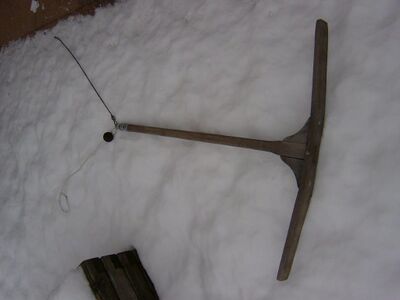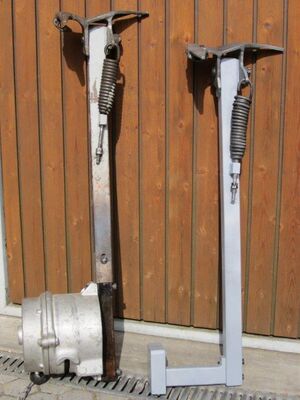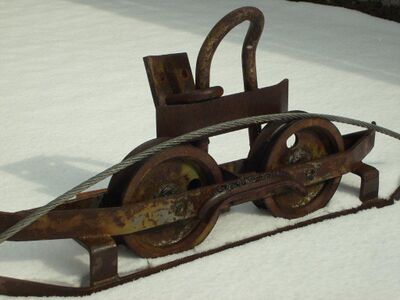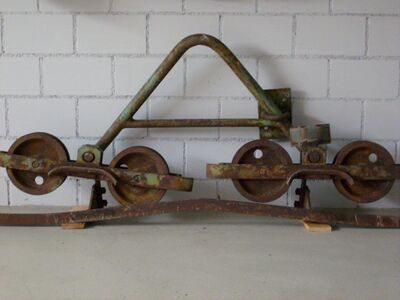Ski Lift Engineer, Ernest Constam, and the 10th Mountain Division
Introduction
By Michael Gibbons, 11/6/2018
Ernest Gustav Constam is recognized as a pioneer in the Alpine ski lift industry. The man behind the technology was an avid alpine skier and a highly respected Swiss mechanical engineer, specializing in mountain railway & aerial tramway design. That was until he set his sights a little lower, by instead designing a small economical surface lift to help introduce people to alpine skiing. While on a 1940 North American business trip to survey several ski lift installation sites, for the Ryans at Mount Tremblant, the Meads at Pico Peak, along with Peabody & Rice at Cannon Mountain, Constam realized the true market potential of his invention when the sport finally reached its “stride” in the US. It was during his business trip, with the outbreak of World War II, that Constam found himself trapped in America. He described the experience to an Idaho Daily Statesmen reporter as being a “refugee in reverse”. Liking it in Denver, Colorado Constam filed for citizenship, leaving his business partner in Switzerland to do his European installations, while he covered North America. Constam partnered with 2 North American companies to install his ski lifts, the Mine And Smelter Supply Company of Denver, Colorado (MASSCO) covered West of the 100th meridian, and a John A. Roebling’s Sons Company of Trenton, New Jersey (JAR) were licensed to cover the East. At first Ernest operated his engineering company out of the Brown Palace Hotel and Apartment, known as “The Address of the West”, until he purchased a house at 901 S. Monroe St, Denver, Colorado.
Constam is most notably known as the inventor who patented a surface lift with a continuously circulating overhead traction line (haul cable spliced endless). His first ski lift installation was a single passenger J-bar on Bolgen Hill at Davos, Switzerland that went into service December 23, 1934. The lift measured 980 feet long and provided 196 vertical feet of skiing per run. The J-bar was quickly copied by American ski entrepreneurs, like Hanover, New Hampshire’s Dartmouth College at Oak Hill. The lift was installed by the American Steel & Wire Co., in 1935, who saw Constam’s lift design as a superior alternative to the rope tow. Another noteworthy development with Constam’s ski lift came in 1935 when Davos ski instructor Jack Ettinger suggested offering the option of a double capacity T-bar attachment, which quickly became the industry standard by the early 1940's. Constam’s innovative overhead lift system is also accredited with inspiring the ever-popular chair lifts of today's ski resorts, but originally, they were only available as a single chair. The T-bar operating at more than twice the capacity of previous surface lifts, at a quarter per capita cost compared to chair lifts, dominated U.S. ski slopes for more than 25 years, but eventually succumbed to the popularity of the chair in the 1960's. In fact, the T-bar was instrumental in providing new ski resorts with an economical way of testing the viability of a location and raising capital to purchase chair lifts.
In regard to the mechanics of the bar, detailed descriptions and illustrations are provided for by Constam in his 1940 Swiss brochure “Aerial Tramways”, in his first North American booklet from 1942 entitled “Schuss Up” and in a 1949 pamphlet, “a Lift for Every Slope”. The “J” or "T" bar is attached at intervals to the main haul cable using one of two basic types of recoil mechanisms: a spring-loaded telescoping pole, or a tethered fishing reel like device attached to a spring box. Both recoil systems were designed to reduce the initial jerking motion when picking up speed to match the main overhead traction cable set in constant motion, and then to retract out of the way for its ride back down the mountain. The spring-loaded, telescopic pole type was offered as a slower more economical option when moderate snow conditions and smooth, even slopes existed. The faster more intricate tethered fishing reel type was specifically designed for widely variable terrain and snowfall accumulations, which cost more to build, install, and maintain.
Ernest Constam was also an early proponent of the military using skis, especially the Swiss and U.S. Armies. He is accredited with installing a T-bar lift at Camp Hale's Cooper Hill, on Tennessee Pass, as part of his war effort to help train 10th Mountain Division recruits become ski troopers during World War II. His alliance with the US Military also involved providing detailed intelligence on Germany's infrastructure to help fight Hitler. The advantage of a T-bar over a chair lift as a training aid, besides its lower cost, was it allowed troops to carry a fully loaded backpack, rifle, and other gear. The U.S. Army selected the site near Pando, Colorado for its access to highway and railroad transportation, rugged mount terrain, northwest exposure, and a 163.5-inch average annual snowfall that provided a six-month-long winter training season. The installation site of the lower drive terminal was laid out at an altitude of 10,576 feet, the cable rising across 21 intermediate towers to a top of pier elevation of 11,698' at the upper tension terminal (20, 720 lb. counterweight). The ¾ inch overhead haul cable supporting 130 T-bars, when operated at full capacity moved at 400 foot per-minute, with a 500 men per-hour rating, providing 1,122’ vertical feet of training per-run. Cooper Hill's ten trails were cut along the way and one of the longest T-Bar's in the country, at well over a mile long (6,000'), went into service on December 3rd, 1942. Consequently, it was the return of U.S. troops that help fuel a post-World War II skiing boom as they took up positions as: competitors, instructors-coaches, equipment designers-manufacturers, retail-wholesale business, resort developers-owners-operators, and of course writers-publishers documenting the sports progression.
Eventually, the Camp Hale military base was deactivated, and Lake County took over ownership of the ski area converting it into a resort for training civilians, which is still in operation today under the management of Cooper Hill Ski Area Inc as a not for profit. The ski area has since been updated with more modern lifts and renamed Ski Cooper, but Constam’s drive bullwheel can still be seen on display in the lower terminal building.
Historically speaking, Ernest Constam’s cutting edge innovations in lift technology, constant promotion of Alpine skiing, and his Camp Hale installation for the U.S. Army was instrumental in the rapid spread and growth of the sport in both Europe and North America. Ernest lived in Denver, Colorado until age 77, dying on September 2, 1965, at St. Luke’s Hospital, and entered at the Fairmont Cemetery Mausoleum, Denver Colorado. (Born in Zurich, Switzerland 12/16/1888 - Died in Denver, Colorado 9/2/1965). When ski columnist Lenny Bughman learned of Constam’s passing he commented that, “Constam was one of the gentlemen of the old school.” R&N
Famous Constam quote:
after 20 years of building the best damn lifts in the world,...I’m proud of everything I’ve done…Over 200 Constam T-bar lifts that I know of, and the Lord only knows how many I don’t know about.
The Lift Maker, 20th Anniversary Interview, National Skiing, Nov 1, 1954, pp. 18-19
Guests are invited to share research, pictures and stories of riding a J-bar or T-bar ski lift at the bottom of this page
Postcards
My collection of J-Bar & T-Bar postcards:
Constam stamp
Squaw Pass, CO. Ski Area T-bar
I wanted to hear that crazy spring sound that I remember while riding t-bars as a child, so I contacted Newcomb Spring Corp and had a new spring made for this t-bar.
This T-bar was recovered from Squaw Pass ski area (1960-75) prior to being updated and reopened as Echo Mountain. While removing the old T-bar lift in 2005 Mark Petitt saved 7 of them, selling one to Michael Gibbons on 9/5/2015. The T-bar is a Constam design made by Roebling in 1960.
Winter Park, CO. Ski Area T-bar
Sipapu Taos NM. Roebling T-bar
Constam Material Deposited In Archives
Colorado Parks Correspondence, Denver Central Library
Early Colorado Ski Resort Paperwork, Denver Central Library, Western History Dept., Denver Department of Parks and Recreation, WH 316, Box 29, Range 90, Section 6, Shelf 6. NOTES: 1) This parks and recreation box contains a lot of early miscellaneous Constam paperwork and communiqués discussing different ski areas, payments, lift problems-solutions, etc. Therefore, I only sampled some of the more interesting stuff regarding engineering and history. There are literally dozens of blue pints in the collection. Some of the ski resorts mentioned in this file box include: Winter Park/West Portal, Climax, Cooper Hill, Berthoud Pass, Turkey Creek, Starbuck Park, Soda Creek, etc…
Constam Lift Operation Maintenance
Mine and Smelter Supply Company
Tickets
Department of Justice
E.G. Constam & E.G. Constam - Swiss Railroad Project (2 folder of declassified D.O.J. war records ending in electrification intelligence of Brenner-Rome line & plans for bombing Zschornewitz-Golpa power station S.W. of Berlin, Germany etc. ), General Records of the Department of Justice (RG 60), Records of the Antitrust Division, Records of the Economic Warfare Section, Central Correspondence 1940-1944 (labeled as Entry 285A), Boxes 1-4, from the National Archives and Records Administration, Washington D.C.
See also the Pabst letter from the New England Ski Museum.
E.G. Constam File
- 1942 E.G. Constam File
- 1942-02-22 p1to2 Henderson
- 1942-08-14 - p1to3 Constam
- 1942-10-09- p1to5 Salder
- 1942-12-18 - p1to2 Constam
- 1942-12-18 - p1to5 Henderson
- 1943-01-15 - p1to2 Henderson
- 1943-01-20 - p1to5 Memorandum
- 1943-04-17 - p1to2 Henderson
E.G. Constam - Swiss Railroad Project
- 1942 E.G. Constam - Swiss Railroad Project
- 1942-10-19-p1 Levi
- 1943-01-15-p1 Esquire
- 1943-01-15-p1 Sadler
- 1943-02-22-p1 Levi
- 1943-02-23-p1 Henderson
- 1943-03-02-p 1 Britt
- 1943-03-02-p1 Britt
- 1943-03-02-p1 Martin
- 1943-03-11- p1 Henderson
- 1943-03-11-p1 Henderson
- 1943-03-15-p1 Britt
- 1943-03-20-p1 Henderson
- 1943-03-26- p1 Martin
- 1943-03-26-p1 Martin
- 1943-04-22-p1to4 Baldwin
- 1943-04-29-p1 Britt
- 1943-05-12-p1 Salder
- 1943-06-09-p1 Henderson
- 1943-07-03-p1 Layng
- 1943-11-25-p1 Constam
- 1943-11-26- p1 Haddock
- 1943-11-26-p1 Haddock
- 1943-12-03- p1 Martin
- 1943-12-03-p1 Martin
Colorado Snowsports Museum
New England Ski Museum
Here are the few papers that deal with safety in the Constam folder that we have. He takes some swipes at his competitors who built early chairs, but I haven't seen anything more recent than these. Terrific reading though I've got to say, his comments on the rope failure at Belknap (Laconia) in our state seem sound. That accident led eventually to state tramway safety laws and and ANSI code. Hope you enjoy these,
- Jeff Leich, Executive Director, New England Ski Museum, Nov 27, 2019
- Index Constam Papers
- Design Features of Constam T-Bar
- Substitutes And Imitations Contam
- Chairlifts And Their Record Contam
The copy of the letter we have came from the files at Bromley, Manchester, Vermont, ski area, which Pabst started. It must have been about 2000 that I went over there and sifted through some of their historical material. Best,
Jeff Leich, Executive Director, New England Ski Museum, June 2018
Mountaineers in Khaki
Photo galleries
American Steel and Wire Company
Bullwheel 6 Recent Pictures - Lower Drive Building
Camp Hale installation site
Camp Hale - Cooper Hill
Cemetery Crypt Panel & T-bar
Ettinger
House - Office
J-bar Pictures, Constam, Davos, Switzerland
MASSCO
Oak Hill Ski Area
Roebling
Ryans-Tremblant, Meads-Pico, Peabody & Rice-Cannon
Single Chair
T-Bar Pictures
Yosemite National Park, Badge Pass Ski Area T-bar
References and Notes
Guests are invited to share any relevant reference material, document their own J-bar or T-bar lift parts, or provide any other historical information at the bottom of this page.
Selected Reference and Author NOTES: I originally set out to simply identify a few T-bar’s in my alpine ski equipment collection. Apparently, a lot of people/companies in the U.S. set about copying Ernest Constam's J-bar design within a year of his first 1934 installation at Davos, Switzerland, which he was aware of. Therefore, upon his arrival in the US Constam went about collecting royalties and then approached several companies to manufacture and install his high capacity T-bar lift whenever he made a sale. So, most of the early Constam J-bars in the U.S. are actually reasonable facsimiles, but they are copies, nonetheless. Most of the J-bar’s copies in the US appear to have fixed lengths, meaning they do not have a recoil spring devices like a Constam. However, some of them had a dangerous counterweight or primitive manually adjustable telescoping pipe for varying snow depths so they would not drag on the way back down.
An indication of a telescoping T-bar, built in America to Constam’s specification, is a coat of industrial blue paint with a yellow bottom, and some actually had "Constam" printed across the wood (except for the bogie wheels, which were painted silver), whereas in Europe the T-bar was typically orange at the time. He also purchased T-bar parts from licensed manufacturers outside the US, like Doppelmayr, for things like wood T-bars used on a recoil spring box. As time went by Constam also patented a lot of changes to his T-bar, like a hydraulically cushioned model, making identification of a Constam very difficult, and therefore detailed provenance regarding the manufacturer, installer and location is very important.
Unfortunately, I was unable to locate a completely intact early American Constam T-bar’s for an examination. While conducting my research I notice a lack of information on the internet, plus I needed some place to document what I had found and ask for help, so this reference page was created. The bold face type font used in this bibliography indicates the source of pictures, illustrations, and any other images used on the webpage.
Aerial Tramways, Ski Lifts and Toes, Description and Terminology, by Charles F. Dwyer, P.E., Chief Cableway Engineer, Forest Service, U.S. Department of Agriculture, June 1975. NOTE: This book is a great source of general ski lift information plus it contains a very detailed vocabulary section.
The Santi's Aerial Ropeway, by E. G. Constam, M.E., E.T.H. Zurich (Master of Engineering degree from Swiss Federal Institute of Technology, Zurich, Switzerland), Nov. 1937, pp. 783-787, from The Railway Gazette. NOTES: 1) I suspect this article is somehow the source of inaccurate information regarding "80 Constam designs" in North America. The figure is mentioned on the Vail Ski Museum web page “Hall of Fame Ernst Constam – 2010”, but inside the report I believe Constam was making a generalization stating, “There are about 80 public passenger ropeways now working throughout the world…” (page 783 paragraph 3). I don’t think he engineered 80 different “designs”, and by the time the National Skiing interview was published in 1954 Constam was reporting over 200 t-bar “installations” in the US. 2) The Vail Museum has a lot of material on Constam, like ski lift pictures and a Cooper Hill wiring diagram, but in the past they did not maintain any succession records, so there are no reference to where their material came from and if there is any more. 3) The Vail Museum name changes include: Colorado Ski Museum 1976 – 2009, Colorado Ski and Snowboard Museum 2010 – 2017, Colorado Snowsports Museum 2018- https://www.snowsportsmuseum.org/ .
Aerial Tramways, for Passenger Transportation, E. Constam, Zurich Switzerland, no copyright or date 1940?. Records of the Forest Service, Record Group (RG) 95 (RMDV-95-15-004, box 752, Jones-Pass 1943-1950), National Archives and Records Administration, Denver, Colorado. NOTE: 1) Regarding the date, the picture on the cover and page five are both dated March 10, 1939 (Nr. 4999 BRB 3. 10. 1929), but it looks like an update list of installation sites (including Camp Hale 1942) was glued onto page four. 2) The lift pictures I copied from this booklet include two people riding a t-bar p. 2, “Arriving at the Finish” p. 3, S.S.S. “Swiss Ski School at Davos” Platz p. 4, “His Majesty the King of Siam on a She- and He-stick” p. 10, “Late Mr. Douglas Fairbanks for the first time on a jay-stick” p. 11, “Up Hill” illustration p. 13.
Two Roebling brochures, the manufacturer and installer of Constam ski lifts, entitled; "Schuss Up..." Sep 2, 1942 (7 pages of text plus 9 pages of pictures with no copyright statement) & "A lift for Many Slopes" 1949 (6 page of pictures mixed with descriptions copyrighted by the now defunct Roebling’s). The proper citation for these Constam pamphlets is: Smithsonian Museum of American History. Archives Center, John A. Roebling Collection #981, Box 15. Folder Ski lifts 1. NOTES: As I understand it, Constam personally oversaw the first three North American t-bar installations (Pico-Tremblant-Cannon). While attending their inaugurations he took pictures for his 1942 brochure, some of which were taken from overhead, suggesting he climbed a tower or was on the base station roof. Apparently copies of the pictures were also given to the ski resort owners, many of which they made into postcards for gift shops, which helped me identify them. Identification of the pictures inside Constam's 1942 Brochure are as follows: Pic-1 Cover-Mont Tremblant, Quebec, Canada, resort founders Joe and Mary Ryans taking the T-bar up the hill, pic's-2, 3 & 4 close-up of riders (Peabody & Rice) and motor at Cannon Mt Franconia, NH, Pic's-5, 6, 7, 8, 9, 10 the Meads at Pico Mt, VT., Pic-11 Cannon Mt Franconia, NH. I have only identified one picture from the 1949 brochure entitled "A lift for Many Slopes", at the bottom of page 4 which is Big Boulder Ski Area, Lake Harmony in The Poconos, PA.
Naturalization Records, Ernest Gustav Constam, Denver Dist., G929.3788 U58nat, March 12th 1942, Doc# 14268, page 95. NOTE: Constam came to the US in April of 1940, but he was going back and forth between installation sites, until he officially coming to the US to stay in Denver, Colorado on June 13, 1941 by way of the Rouses Point New York border crossing.
Progress Seen In Snow Basin Project Moves, The Ogden Standard-Examiner, Ogden Utah, July, 7, 1940 p. 10B. NOTE: Mentions Constam installations in New England and Canada plus it includes a pointing picture at Snow Basin, but the project was repeatedly delayed. I never received a response to requesting the use of the picture.
SNOW BASIN PLANNING, photo taken on or about July 6, 1940, Photograph Courtesy of the Ralph Johnston Collection, MS 65, WSU Special Collections and University Archives, Ogden, Utah. NOTE: Picture of 4 men planning snow Basin ski resort which includes, Left to right: Julius Billeter FS Engineer, Alf Engen Summer Recreation Specialist FS, F. C. Koziol Forester in Reginal Office, E. Constam Swiss Engineer and Designer of ski lifts.
Survey Ogden Skiing Area - Swiss Expert Lands Winter Sports Area Near Ogden The Salt Lake Tribune, Utah July 7, 1940, p. C5. NOTE: Snow Basin article mentions Constam coming to the United States last April on a business trip with poor picture of Constam looking at blueprints.
Engineer Has Pleasant Life as Designer and Builder of Ski Lifts, by Dexter C. Ellis, from The Ogden Standard-Examiner, Ogden Utah, Jun 9, 1946, p. 8A. QUOTE: Constam interview that mentions the sport reaching its “stride” in the US.
Report Finds Mr. Constam, Rugged Outdoor Man, Ill Abed, by Bob Shults, from The Idaho Daily Statesman, Jan 31, 1947, p7. NOTE: Photograph and interview with Constam, while sick in the hospital with the flue, at which time he mentions being a “refugee in reverse”. I sent several emails requesting the use of the photograph, but they never responded.
Constam Patented Ski-Lift, The Mine & Smelter Supply Co (MASSCO), ad from Ski Magazine, February 15, 1949, p 15.
MASSCO sheave wheel assembly (aka bogies wheels), three pictures taken and owned by Bill Fetcher of Steamboat Springs, Colorado. From the 1948 Constam ski lift found on the abandoned Emerald Mountain span that would have been on the descending or unloaded side. (The lift moved clockwise).
Fate Of Steamboat's Future In Ski World Rests On Sale Of $60,000 Bond Issue Authorized By Town, The Steamboat Pilot Newspaper, Aug 15, 1946, p 1. NOTE: This article mentions Cooper Hill and other Constam lift installations made since his arrival in 1941?. This ski lift had both Constam T-bar’s and Roebling single chairs. The best postcard showing both chair and T-bar attachments is the “Steamboat Springs., Colo. From Ski Lift, Chase E. Grover Photo” A picture from the same Steamboat photo shoot appears in a Constam Patented Ski Lift ad for the Mine & Smelter Supply Co. Denver, published in Ski Magazine, February 15, 1949, p15.
American Ski Annual, 1941-42, edited by The United States Eastern Amateur Ski Association, for The National Ski Association. Two ad’s “CONSTAM (Patented) SKI-LIFT The World’s Best Known Ski-Lift Equipment” on page 20 and “Try the new CONSTAM SKI-LIFT!” on page 44. NOTE: The Constam advertisement on page 20 mentions Winter Parks T-bar is under construction by the Mine and Smelter Supply Co. of Denver, Colorado (covering West of 100th meridian) & another ad on page 44 mentioning the other licensed installer (East of 100th meridian) as John A. Roebling's Sons Company of Trento, New Jersey. These two advertisements mention Constam’s first 7 North American installations but does not mention the Cooper Hill-Camp Hale-10th Mountain Division T-bar, possibly because of the national security imposed during the war (Pico Peak-Vermont, Cannon Mt-Franconia NH, Mt. Tremblant-Quebec, Mt. Ralston-Lake Tahoe California, Winter Park-Denver Colorado, Snow Basin-Mt. Ogden Utah, Mt. Rose-Reno Nevada).
John A. Roebling’s Sons Company, Manufacturers of Wire Rope, illustrated rope advertisement from November 15, 1879, p 188, Frank Leslie's Illustrated Newspaper.
John A. Roebling's Sons Company, Kinkora Works, Wire Product Facilities, Roebling, Burlington County, NJ, Survey number: HAER NJ-122-D, Library of Congress Prints and Photographs Division Washington, D.C. 20540 USA http://hdl.loc.gov/loc.pnp/pp.print. NOTE: Source for the picture of a Roebling spool of wire.
That Ski Tramway At Dartmouth, by Don Tresidder, photographs by Ralph W. Brown (no copyright info available?), from The American Ski Annual, 1936, pp 158-159 & advertisement for More Skiing with Less Effort p 44 (photo B in lineup), edited by The United States Eastern Amateur Ski Association, for The National Ski Association, Stephen Days Press. NOTE: 1) Article about Hanover, New Hampshire’s Dartmouth College lift at Oak Hill installed by the American Steel & Wire Co., in 1935. 2) On pages 157-160, of the American Ski Annual, the lodge at California’s Badger Pass ski area is also mentioned. The main focus was a cast iron, 21 panel radiant heat array mounted above the fireplace done by artist Robert Boardman Howard in an Art Deco bas-relief style that he was famous for. Howard and his wife Adaline Kent the sculptor, thought it was one of their best works. The big 3-foot square cast iron panels were assembled in series of three, read from left to right, each illustrating the various phases of the: _ _ _ _ _??? 3 point kick turn OR herringbone???, CHRISTIANIA, STEM (turn), JUMP, TELEMARK, JUMP TURN, SKATE. The fireplace irons consisted of two cast iron skiers standing a whopping four feet tall, each holding skis, but the huge proportions of the fireplace were well suited to the large room. UNFORTUNATELY, this new deal publics works project was disassembled and some of the pieces are missing. One of the greatest pieces of Art Deco bas-relief ever dedicated to skiing, is LOST. Does anybody have a photograph or postcard that clearly depict all the figures and words on the panels???
20 Years of Uphill Work, by Robert S. Monahan, photographs by Adrian Bouchard (Dartmouth College Photographer?), February 1955, pp. 29-31, from New Hampshire Profiles. NOTE: An extensive amount of notes, drawings and reports on the Datmounth lift are archived at the Dartmouth Collage Library, Rauner Special Collections, Library, Manuscript Material 936940-3 & a folder intitled “Oak Hill Lift-Information Historical” collection # DA-617 in Box 5673.
Oak Hill Ski Area, pictures courtesy of Dartmouth College Library, Rauner Special Collections, 6065 Webster Hall, Hanover, NH. I was given permission to use the flowing Oak Hill pictures 1/A) Oak Hill (ID# PhotoFiles-Icon1647-1624-0000015 by Ralph W. Brown), 2/C) Lower Drive Terminal Bullwheel (ID# PhotoFiles-Icon1647-1624-0000014), 3/D) J-Bar Rider Loading (ID# PhotoFiles-Icon1647-1624-0000011 by Ralph W. Brown), 4/E) J-Bar Rider (ID# PhotoFiles-Icon1647-1624-0000019), 5/F) Top Tension Terminal & Counterweight (ID# PhotoFiles-Icon1647-1624-0000020). https://collections.dartmouth.edu/
General Information and Specifications for Roebling T-Bar Ski Lifts and Roebling Chair Lifts, John A. Roebling's Sons Division, The Colorado Fuel And Iron Corporation division, Trenton 2, New Jersey, 22 pages, circa 1960. NOTES: The appearance of this booklet in Colorado is attributed to Squaw Pass Ski Area installation in 1960. Historical Speaking, by 1960 Constam's patent had run out and the new owner of Roebling’s Sons was taking credit for having "developed" (p.3) the T-bar lift and the name “Constam” wasn’t mentioned in this booklet.
Roebling Bridge Division: Products and Engineering Services, Roebling’s (John A.) Sons Corp., 1957. NOTE: Page 10 discuss the T-bar ski lift.
It's More Runs Per Day!, Thanks To the Patented Ski Lift built by Roebling, ad from Ski Illustrated, Jan 1948, p 8.
The Brown Palace Hotel and Apartments postcard, The Address of the West, Denver Colorado (no artist name, date, or copyright).
“What’s New In Ski Lifts? also Gondolas Jigbacks, We Invite Your Inquiry E/G CONSTAM, 901 S. Monroe St. – Denver 9”. Advertisement from the Northwest Skier newspaper, America’s First Ski Weekly, Vol. 4, No. 18, Feb 16, 1962, p 2. NOTE: A copy of the Constam ad from Northwest Skier’s came from an issue deposited in the Marriott Library, University of Utah, Alen K. Engen ski school collection. The same 901 business address appears in Constam’s obituary as his home address. The house has since been torn down, but the current owner of the property, a Sara Woodward, provide me with pictures of Constam’s house in Dec of 2020 and permission to use it.
Switzerland Patent, Schlepporgan für Skiläufer–Schleppseilbahnen Aug 17, 1934 (# CH 179310) and/or U.S. Pat., Traction Lines for Ski Runners and Other Passengers. Filed Feb. 21, 1935 published July 20, 1937 (pat# 2,087,232).
Constam and Davos photographs provided by Robert Constam (son of Ernest Constam), and deposited at the Swiss Ski Museum, Case Postale 67, CH-1937 Orsières. NOTES: I was also provided with pictures of the Swiss J & T bar. The museum also gave me the following 1938 Constam advertisement without a reference, so I would be interested in getting the citation for: “Constam Patent-Ski-Lifte, Zurich TEL 41205, Davos 3, StMoritz 2, Arosa 2, Murren Klosters, Pontresina, La Dole, Oberiberg, Megeve, Mount-Genevre, Beuil, Mont-Joux, Colde Voza, Carroz-Araches, Garmisch, Piz Ronce.” I came up with the idea of altering the 1928 portrait of Constam holding twin babies, IE erasing the babies and inserting the advertisement, so that it looks like he is holding a patent sign (https://www.swissskimuseum.com). Photoshop alteration was done by Kandra Churchwell.
Aerial Tramways For Passenger Transportation, Ski Tows And Ski Chair Ropeways, American Steel & Wire Company, copyright 1938. From the Information Center for Ropeway Studies, Colorado School of Mines Library, at the Arthur Lakes Library, 1400 Illinois Street, Golden, Co. 80401 (https://libguides.mines.edu/Ropeway-Center). NOTE: Page ten depicts a rudimentary drawing and description of a Jay bar. This publication appears to be the oldest North American ski lift catalog in existence documenting the infringement on Constam’s J-bar ski lift patent.
Davos - Bolgen J-bar T-bar Pictures, poster-Up Hill Der Ski-Aufzug Der Schweizer Ski-Schule Davos Ubungsfeld Davos Plantz, pamphlet Die Schweizer Skischule, Seilbahn Museum Schweiz, Aeussere Dorfstrasse 146, 3718 Kandersteg. NOTE: Swiss museums have many of the same pictures. I asked the Seilbahn Museum about their digital archive, regarding who owns what, but they never replied. Therefor I am mentioning them to cover my bases. (http://www.seilbahn-nostalgie.ch)
The First Ernest Constam Ski Lift, from Ski Story .com, Transports de Montagne, Le premier teleski, NOTE: Source for a picture of Davos J-bar ski lift. http://www.skistory.com/F/transports/C24.html
Ernst Constam And His Marvelous Uphill Device, by Morten Lund, With Kirby Gilbert, Robert Constam, Marcel Just, Claude Gentil, Gehard Sameli-Huber, and Luzi Hitz, from Skiing Heritage Journal, pp 25-31, December 2005.
Ernst Gustav Constam, Erfinder des erfolgreichsten Skiliftsystems, Januar 2013, by Luzi Hitz, Corseaux. NOTE: A great biography, Davos lift pictures, and incredibly detained list of Constam ski lift insulations, but somehow, he forgot Special Use Permits # 2710, San Isabel National Forest, Climax Molybdenum Company, Climax Winter Sports Center, Constam T-bar lift, 1947 (MASSCO 2,600-foot-long, 720-foot-verticle).
Climax, The History of Colorado's Climax Molybdenum Mine, by Stephen M. Voynick, 1996, Second edition. NOTE: Climax ski area info page 199 and a picture of the run 239.
Winter Park Ski Area to Expand, by Willard Haselbush, Denver Post, Dec 17, 1961, p. 11A. NOTE: This article mentions the ski resort started with a T-bar ski lift, and then goes on to say the increased popularity of skiing and competition was forcing Winter Park to get its first chair lift. However, at the time a standard two-seater chair did not actually increase lift capacity, they were simply a luxury.
T-Bar Tips, Ski Magazine, by Paula Kann Valar, January 1962, p. 85.
First T-Bar Ride, by Diana Mitcheltree, Ski Magazine, November 1965, p. 134.
Ride 'em T-bar, by Alicia Kossler, Ski Magazine, October 1967, p. 106.
Colorado Skiing Tops In The Nation, from the Colorado Ski Information Center, 225 West Colfax Ave, Denver 2, Colorado AComa 2-0671, 1955-56 ski season. Deposited in The Denver Central Library clipping filed under, "Skiing. Colorado 1950-1959". NOTES: This booklet contains more information than most publications about the original Constam lift on Cooper Hill, but only briefly mentions a new 1955 T-bar, failing to provide any details like the name, maker, color, etc… (page 11). The original Constam T-bars were blue, but the ones hanging on the wall at the current Cooper Hill Ski Area, ones held by the History Colorado Museum, and one held by Vail ski museum, have been re-painted black and some have what appears to be original orange paint on them, so not sure if any 10th t-bars have survived. On Dec 18th, 2018 I obtained some lift information from a conversation I had with Dan Torsell, Coopers President-General Manager since the 1980’s. Dan could not say for sure what happened, but he thought the second T-bar lift installed in 1955 was an orange T-bar made by Doppelmayr, the towers of which have since been reused for their pama disc lift. There is some confusion, but no museums had any interest in opening the t-bars to look inside for ruminants of their original paint color. Another idea I had was to have the History Colorado Museum put an orange and black T-bar side by side for a comparison, but they wanted $50 to do so, which is when I gave up on my idea of identifying an early Constam T-Bar. The black and orange T-bar’s looked the same to me, IE they are not a Constam, so I was hesitant to go any farther with my search. Unfortunately, all of their major parts, like the T-bar’s “hanger arm" and internal spring assembly parts had all been removed, which could have helped identify them. Another problem comes from an interview with long time Leadville resident Richard Bistam on December 14, 2022 who stated that in 1962 when the Climax Mine shut down their company town and employee ski area the Constam T-bar lift, built in 1947, was given to Cooper hill ski area as replacement parts.
The Where to Ski Guide Book, by Joan and David Laudman, 1949. NOTE: Cooper Hill T-bar information page 208.
Mountaineers In Khaki, U.S. Army's "The Big Picture" television series, 1950-1975. The original production release sheet reads: Training activities of the U.S. Army's Mountain and Cold Weather School, Camp Hale, Colorado. The NARA ID number is 111-TV-339 (episode). NOTES: This material is in the “public domain” free of copyright restrictions. This federal reference information might be wrong because a lot of researchers claim the series actually started in 1951. The release date for this episode is listed as 8/14/1956 and I believe the air on date was 10/21/1956. Also, by 1956, The Big Picture had moved from CBS to ABC. The late publication date of this series indicates the troops on the lift are men of the Mountain & Cold Weather Training Command, which comprises Camp Hale’s “second generation” of ski troopers (1952-58?). The motion picture footage of troopers at the base station loading onto the T-bar lift at Camp Hale's Cooper Hill/Free Rides Up the Ski Tow is a clip from minutes 21:20 to 21:32). The Camp Hale Sign is from minute 16.13. To make the “Ski Only Edition” of this program the following two parts of the film, the first from the introduction and the second from its skiing portion, was cut out and pasted together to make a short 13:08 minute ski movie: 0:38 to 1:48 & 16:13 to 28:10.
Mountain Fighters (1943) In Technicolor, A Warner Brothers Production, Produced In Cooperation with the U.S. Army, Director: B. Reeves Eason, Stars: John Ridgely (Lt Evers-training officer), Peter Whitney (Sgt Blake), Warren Douglas (Pvt Kramer), Frank Wilcox (Commander), Henry Rowland (Norway Volunteer), and Lou Marcelle (Narrator). A 20-minute US Army enlistment production. Release Date: August 7th 1943 (USA). Also Known As: Technicolor Specials (1942-1943 season) #5: Mountain Fighters. Filming Locations: Camp Hale, Colorado, USA. NOTES: This special short contains incredible footage of the T-bar lift in operation with troopers loading, riding and unloading. This color film helped me identify both the T-bar and other lift components as originally being painted industrial blue. The stills from this movie production have been mistaken by historians for picture taken of Cooper Hill’s of the 10th mountain division troops. The photographer hired by Warner Brothers to take the stills of this movie was "Mac Julian" of “Hollywood”, but somehow people like William J. Bourke, Jr. obtained a lot of the pictures. After he died in 1977 his wife compiled and donated 2 scrap books of his stuff to The Denver Central Library, Western History Collection, TMD 169. In the Bourke file the movie was incorrectly referenced as “The Fighting Mountaineers”. This special short appears to be your typical US Army enlistment production in the public domain, tailored to attracting good recruits, not entertainment per say. However, Warner Brothers was involved in the production and appears to have copyright over this propaganda film. The above-mentioned problems are compounded by the 10th mountain division club members distributing, among themselves, copies of stills, motion pictures and documents with very little reference to the original sources of the material, most of which was donated to libraries/museums after their death. I am not an expert, but my close examination of the pictures has revealed slightly blurry photographs suggesting many of them are copies of copies, which did not help identify early T-bars. All sorts of question arise, like who owns the original, copyright, and public domain status of U.S. Army Signal Corps pictures and movies. This is compounded by the libraries/archives that do not know the copyright status, who request “use fees” for material, suggesting they own it. In addition to the legal liabilities taken on by library/archive, this sort of practice open’s authors and film producers to copyrights infringement lawsuits, but evidently, it’s a buyer beware kind of thing. Therefore, regarding my pictures of the 10th Mountain Division at Cooper Hill, I restricted myself to using public domain material from federal archives with a reference, which I then had restored. The term “public domain” meaning used by anyone, anywhere, anytime without permission, license, or royalty payment.
Other films made at Camp Hale include No. 7-677 "Ski Equipment"; No. 7-678, "Snow Camping above Timberline"; No. 7-679 "Snow Camping in Timber"; No. 7-680, "Ski Safety"; No. 7-681, "Ski Safety--First Aid and Emergency Repair of Equipment"; No. 7-682, "Ski Sled"; No. 7-683, "Ski Mountaineering", "Mountain Climbing, Rock and Ice" and several commercial "shorts," most ambitious of which was the Warner Brothers' Technicolor production, "Mountain Fighters"
Mountain Trooper Picture, Cpl. Hall Burton jumping with a full pack and rifle, photograph taken by Pvt. Martin Harris (aka “YANK”) SC 329331/Lot 14930/111-SC-329331. This is referenced at N.A.R.A. as a 1943 picture from the U.S. Army Signal Corps Photographs Of Military Activity During World War II and The Korean Conflict, 1941 – 1954, Record Group, Series (SC), Signal Corps, NAIL Control # NWDNS-111-SCA. The three March 15, 1956. National Archives at College Park, 8601 Adelphi Road, College Park, MD 20740-6001
Postcard, The Tennessee Pass Ski Area, Located on US 24 ten miles north of Leadville, Colorado, published by Nobile Cards, Co Springs 529301, NOTE: Source for an early color photo of Cooper Hill, but not sure when it was taken (194?).
Camp Hale, Colorado, 1942-43 Report, among Records of the Office of the Chief of Engineers (Record Group 77) Entry 391, Construction Completion Reports (3 volumes) found in boxes 40 – 41, located at 370/53/16/1, National Archives at College Park, MD.
The photograph reference cited on first page of the report states: Camp Hale, Pando, Colorado, 1942-43, Completion Report, War Department, Office of the Chief of engineers, Directive Consecutive No, T414, which established Job No, Pando T1, Photographs (aka a pectoral report) Cave Storage Row E, Bin 72. NOTES: The source for the rope tow and T-bar ski lift information with pictures on the opposite side: Part 2 Page 100, Part 2 Page 102, Part 3 Page 82, Part 3 Page 83, and Part 3 Page 84. Some of the information like the average annual snowfall of 163.5 inches is from Part 1 Page 1, and the survey-engineering pictures of Permanent B.M. (Bench Mark) are from Part 7 Page 13 (The two surveyors are unidentified, but possibly E G. Constam on the left and consulting engineer R. J. Tipton on the right). I have never seen Constam mentioned in this completion report, but it does mention The Mine and Smelter Supply Company who did his ski lift installations (Part 2 Page 100). The report also states, “Since the ski lift is patented, the licensee prepared and furnished the plans for both the construction and installation.” (Part 3, P. 83). War time restrictions limited the use of metal, so I think the report also alluded to deviating from steel portals to a modified single wood telephone pole like construction, because in the next sentence it states, “In building the supporting structure, a few substitutions of material” where made. The Ski Lift: Description, with information on elevation, towers, length, and turn over date of December 3, 1942, etc. starts on page 82 of part 3. I contacted NARA about requesting copies from the US Army Corp photo collection, but they are missing the 1942-44 Camp Hale pictures. The Lake County Public Library, Leadville Colorado, was contacted in February of 2018 about what appears to be a good portion of the missing pictures from the Camp Hale Completion Report on their Colorado Mountain Digital Collection web page. The Camp Hale pictures are actually held by their partner, the Lake County Civic Center Association in the Colorado Mountain History Collection-Museum. I requested their succession records, but all I received was notification of a “use” fee for what I consider Federal pictures in the public domain. Unfortunately, all the good close-up “pictures” of the T-bar ski lift are missing from the Leadville completion report collection. However, the libraries web site suggests they have “negatives” indicating they may have the complete collection, so the missing T-bar pictures should be retrievable from the negatives. Regrettably, the library-museum “use fees” are cost prohibitive, so I was left with restoring the poor copies published in the Camp Hale Completion Report.
Tales of the 10th, by Jeffrey R. Leich, 2003 (Executive Director of New England Ski Museum). NOTE: The picture of the two men riding Cooper Hill T-bar in white uniforms is found on page 33 of: History of the Mountain Training Center Study No. 24 Historical Section Army Ground Forces 1948, AD-A955 065, by John C. Jay Maj., Inf. Res. The same T-bar picture also appears in the Ski News, November 15, 1943, page 2, US Army Signal Corps photo (public domain). Jeff stated "If I recall, we scanned the photo from the Ski News article. Perhaps when we published the book, the book designer found a way to sharpen it up so it doesn't appear quite as fuzzy as a newspaper scan normally would Yes, ok to use our version. It turns out that Ski News was printed on fairly glossy paper and it reproduced OK.” (http://newenglandskimuseum.org/)
History of the Mountain Training Center Study, No. 24, Historical Section Army Ground Forces 1948, AD-A955 065, by John C. Jay Maj., Inf. Res. NOTE: This report has 16 photographs including troopers on T-bar picture (p. 33), K9/K-9 detachment unit trained to transport private communiqués between two dog handlers (70-71), a list of movies made at Camp Hale (p. 95) and mentions the Constam ski lift (pp. 35 & 95).
Camp Hale May Close, from National Skiing, Nov. 3, 1956, Vol. IX Num. 3, page 2. NOTE: This article mentions the first mistaken deactivation of Camp Hale, then rebuilding temporary housing on the old building foundations, and a review for a possible second dismantling of the base. The Army would not comment about the first mistaken deactivation of the base suggesting the rumor was true. At the time of this newspapers publication the National Skiing editor was 10th Mt Veteran Bob Parker (1955-1960?) so this article has credibility. Therefore, it is hard to say when Cooper hill was officially shut down. The name of this publication changed from the National Skiing Newspaper to National Skiing, to just plain Skiing.
"Skiing Personality: The Lift Maker," by B.D. (Bill Dunaway), National Skiing, volume 7, number 1, November 1, 1954, pp 18-19. NOTE: Constam quote “after 20 years” was taken from this interview.
Early Colorado Ski Resort Paperwork, Denver Central Library, Western History Dept., Denver Department of Parks and Recreation, WH 316, Box 29, Range 90, Section 6, Shelf 6. NOTES: 1) This parks and recreation box contains a lot of early miscellaneous Constam paperwork and communiqués discussing different ski areas, payments, lift problems-solutions, etc. Therefore, I only sampled some of the more interesting stuff regarding engineering and history. There are literally dozens of blue pints in the collection. Some of the ski resorts mentioned in this file box include: Winter Park/West Portal, Climax, Cooper Hill, Berthoud Pass, Turkey Creek, Starbuck Park, Soda Creek, etc… 2) Constam Signature, underlined in a ski lift symbol, was taken from a letter dated “1942-06-04-p1to2_Constam_Rope_Jump_Winter_Park”. 3) Monogramed paperwork from The Brown Palace Hotel and Apartments “1940-06-27-p1_Jones_Pass”. 4) Drawing documenting Infringement of Constam’s J-bar patent “1938-10-07_American_Steel_and_Wire_J-bar”, 5) MASSCO catalog cover and catalog advertisements for Machinery & Supplies, Laboratory Supplies, and Electrical Supplies sold from outlets in Denver Colorado, El Paso Texas, and Salt Lake City Utah.
Constam Papers, A culmination of Bio’s, ski lift installation lists, Dated & Undated Papers, etc…, held by the New England Ski Museum, 135 Tramway Drive, Franconia, NH 03580-4403. NOTE: The New England Ski Museum holds one of the larger collections of Constam material in North America.
Obituary, Rocky Mountain News, Friday, Sep. 3, 1965, p 133. NOTE: A source of Constam’s general life history and that he was a proponent of military ski troopers.
Saint Luke’s Hospital, a not for profit general hospital founded by the Protestant Episcopal Church, 601 East 19th Ave. Denver, Colorado 80303, postcard by Joseph’s Cameras & Photography, Inc. 49391-C. NOTE: Constam’s place of death.
Ernest G. Constam, Resting Place, Fairmount Cemetery, 430 S. Quebec St., Denver, Colorado. Fairmount Mausoleum, Section 568. Tear DD, Chapel Floor. Picture of Constam Crypt Panel reads “Constam, Elsa P. 1896 - 1971, Erenst G. 1888 - 1965”. NOTE: Instead of flowers I brought a Doppelmayr T-bar to act as a prop in my photographs taken May 22, 2020.
Breckenridge Ski Area Chronology, by Paul Hauk, USDA Forest Service, Retired, White River National Forest, June 1979.
Postcard, Breckenridge, Colorado, Skier riding Constam T-bar #1, length approximately 4,500 ft. The front range of the Rockies can be seen in the background. Color by Geo. R. Dickson, postcard distributed exclusively by G. R. Dickson Co. – 932 Inca, Denver Colorado, 1962 (P70843 S-609). NOTE: Picture of what I believe to be a hydraulically cushioned T-bar with “Contam” printed on it.
The Mountaineers, patch with two crossed swords symbolizing "X" in Roman Numeral with a ‘Mountain’ Tab above indicating 10th Mountain Division. Without the "Mountain" tab the patch symbolizes tenth "infantry".
Cooper Hill pictures of Constam’s drive bullwheel taken by me on April 4, 2018.
Ski Slopes, First Skiing of the Winter, by Lenny Bughman, December 2, 1965, p 10, Pittsburgh Post-Gazette. NOTE: Mention his death commenting “Constam was one of the gentlemen of the old school.”
T-Bar Vocabulary: The term trolley or tramway was used for J-bars in America during the mid 1930’s, or it was called a “Dartmouth” type of ski lift. Historically speaking the most widely known illicit copy of a Constam J-bar lift in America, prior to his arrival and primary use of the T-bar, was that of the Dartmouth College ski lift (Thayer School Of Engineering). The “J” and “T” bar lifts are also called a “surface lift” or “drag lift”. In France the T-Bar is known by the name of “Pioche”, which in English means “pick-axe”. The T-bar was also referred to as a He-and-She Lift, T-Tow, and Crossbow. Name variations of Ernst/Ernest include E/G or E.G. Constam, or Erich Konstam. The name “Ernest” derived from Germanic word “Ernst” meaning “serious”.
FEDERAL COURTS OF THE TENTH CIRCUIT: A History, by Hon James K. Logan, Published by the US Court of Appeals for the Tenth Circuit, 1992. NOTE: Source for the vintage lobby picture in the brown palace hotel.
BADGER PASS SKI RESORT, pictures of T-bar Location # YOSE: Box 35, blueprints # YOSE: E1 DR2 F17, map # YOSE Location: E1 DR13 F4, Courtesy U.S. National Parks, Yosemite National Park, California (https://npgallery.nps.gov/).
A Cinderella stamp depicting a Constam T-bar that reads: Skilift Fluhli Kt. Luzern, System Constam, 300 m Hohenditterenz. The stamp was affixed to the flap of a letter that was postdated June 14,1946.
Feedback
Guests are invited to share research, pictures and stories of riding a J-bar or T-bar ski lift here with their ETHW account. If you do not have an account, you can create one.
